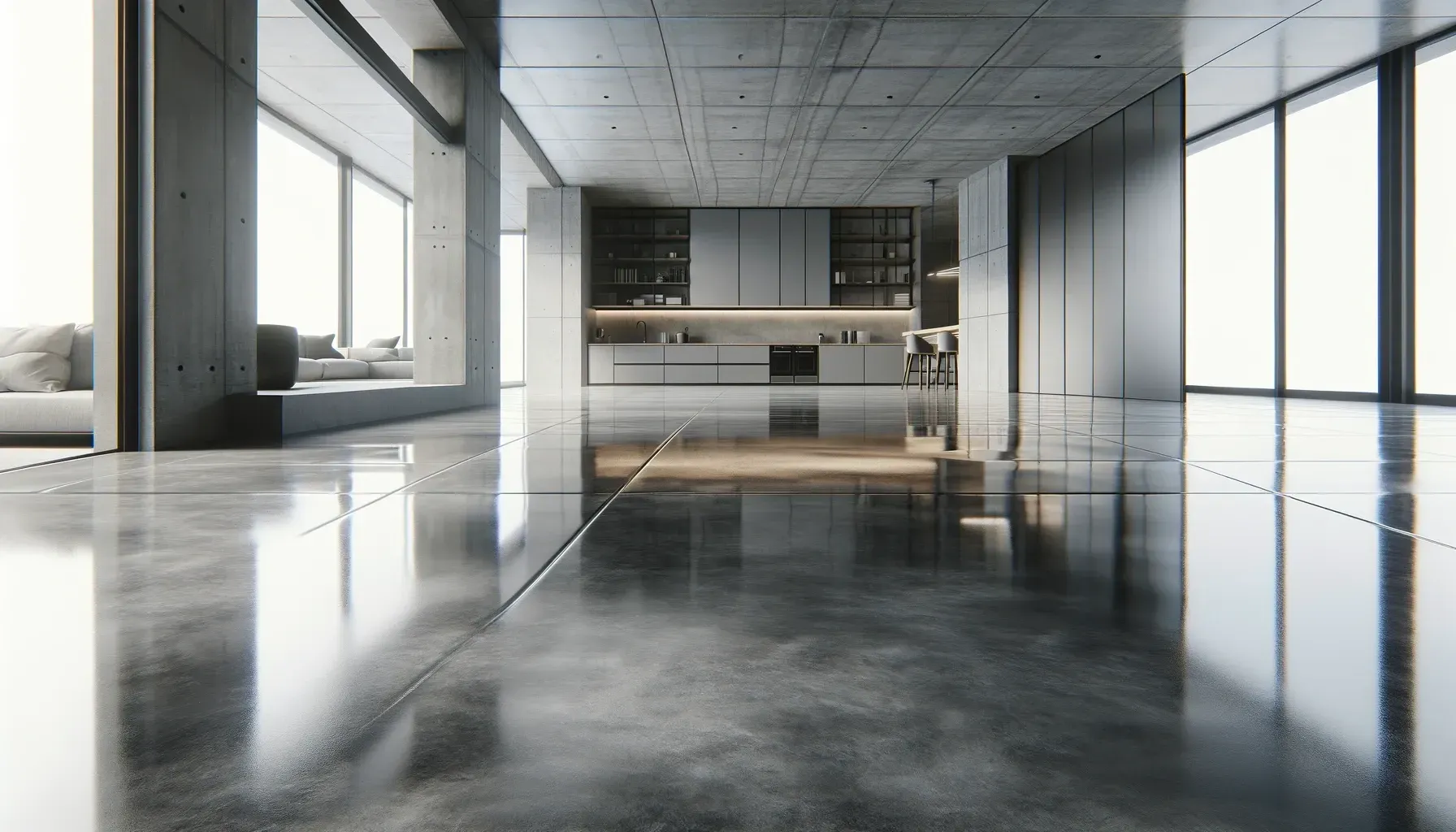How To Clean Polished Concrete Floors
Concrete floors offer both low maintenance and modern aesthetics . The combination of a simple floor care routine and professional service is all that’s needed to keep your floors as good as they look new.
Continue reading and learn what products you should use to clean your concrete floors and why they may need to be professionally serviced.
The Basics of Concrete Floor Care
KEEP YOUR FLOOR FREE OF DUST, DIRT, AND GRIME
- The secret to your floors long life is keeping the surface of your concrete floor free of dust, dirt, and grime.
- Excessive surface contaminants act as abrasive, dulling, and discolouring decorative concrete floors. Frequent concrete floor cleaning will dramatically prolong the interval between professional service calls.
- We recommend high quality robotic vacuums designed for hardwood flooring to perform routine floor cleaning duties. They’re reliable and efficient and can keep up with contaminants from foot traffic.
- Dust mopping is your second best choice if a robot vacuum is not an option. We recommend using a microfiber dust mop, both dry and with clean water. These dust mops are machine washable and reusable.
USE THE CORRECT MOPPING SOLUTION
- When mopping polished concrete floors, it is essential to use the correct cleaning solution.
- We recommend Ameripolish® Rejuvenating Floor Cleaner. This product is designed for polished concrete floors, and increases stain resistance when used regularly.
- Never use cleaners such as Pine-Sol, ammonia, vinegar, or bleach as they will dull, discolour or etch polished concrete and stained concrete floors.
How Often Should You Professionally Clean Your Polished Concrete Floors?
We usually recommend professional inspections every two years and servicing atleast every six years.
If your concrete floors are looking dull, especially in high foot traffic areas, it may be time for your floors to be serviced. If your floors look different from those installed, a professional inspection is needed.
In our standard residential servicing, we deep clean your floors with a specialized automatic floor scrubber and then use a high-powered buffer to bring back their original lustre. This one-day service will revitalize your floors.
How to Minimize Concrete Maintenance Costs
A polished concrete floor with a grouted saw cut line. These contrasting grout lines both accent the decorative cuts and eliminate cleaning issues.
ALWAYS REMEMBER TO KEEP YOUR FLOOR CLEAN!
- Use a mop or vacuum to remove surface contaminants such as dust and dirt. We generally recommend a robotic vacuum over a dust mop, as they can clean both concrete and rugs, and clean concrete is the key to long service life.
USE RUGS - BUT NEVER WITH A RUBBER RUG BACKING
- Rugs are a great idea on concrete floors, especially in entryways. They’ll reduce the volume of contaminants tracked onto the floor from daily foot traffic.
- However, rubber rug backings can dull the shine of polished concrete flooring. Instead, use felt-style rug backers. Because polished concrete isn’t slippery, you may find no need for a rug backer.
NEVER WAX YOUR POLISHED CONCRETE FLOORS
- Wax is considered a contaminant on polished concrete flooring and can cause costly repairs. Wax buildup is difficult to strip and will only temporarily improve the appearance of your floor.
- Take care not to use a floor cleaner with added wax. Mop & Glo is the primary culprit. Again, a damp mop with a small amount of gentle soap is required.
NEVER STICK TAPE TO A DECORATIVE CONCRETE FLOOR
- Even blue painter’s tape can damage the surface of a decorative concrete floor if installed for an extended period. This is one of the most common and costly maintenance issues of concrete flooring.
CHOSE THE CONCRETE FLOOR INSTALLATION THAT BEST FITS YOUR NEEDS
- In 2022, most decorative concrete installations will be polished concrete. Unlike stained concrete floors, polished concrete does not utilize a film-forming sealer, so it has the lowest long-term maintenance requirements of any concrete flooring.
CLEAN SPILLS PROMPTLY
- Always clean liquid spills as soon as possible. Spills allowed to dry on polished concrete can seep into the floor, causing stains.
- Pay special attention to reactive liquids such as vinegar, soaps, or wine. These liquids are notorious for damaging polished concrete fl, and oil Oil stains are common, especially in kitchens.
HAVE YOUR FLOOR PERIODICALLY INSPECTED BY AN EXPERIENCED CONCRETE FLOOR POLISHER
- If the surface of your floor looks different from when it was installed, it’s probably time to have it professionally evaluated. Worn floors are more prone to staining and discolouration than properly maintained floors—leading to expensive repairs.


